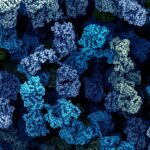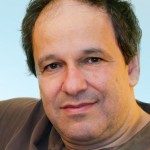Link to Pubmed [PMID] – 22505027
EMBO J. 2012 May;31(10):2427-37
RNA Pol II transcription termination can occur by at least two alternative pathways. Cleavage and polyadenylation by the CPF/CF complex precedes mRNA transcription termination, while the Nrd1 complex is involved in transcription termination of non-coding RNAs such as sno/snRNAs or cryptic unstable transcripts. Here we show that transcription of RPL9B, one of the two genes coding for the ribosomal protein Rpl9p, terminates by either of these two pathways. The balance between these two pathways is modulated in response to the RPL9 gene copy number, resulting in the autoregulation of RPL9B gene expression. This autoregulation mechanism requires a conserved potential stem-loop structure very close to the polyadenylation sites. We propose a model in which Rpl9p, when in excess, binds this conserved 3′-UTR structure, negatively interfering with cleavage and polyadenylation to the benefit of the Nrd1-dependent termination pathway, which, being coupled to degradation by the nuclear exosome, results in downregulation of RPL9B gene expression.



